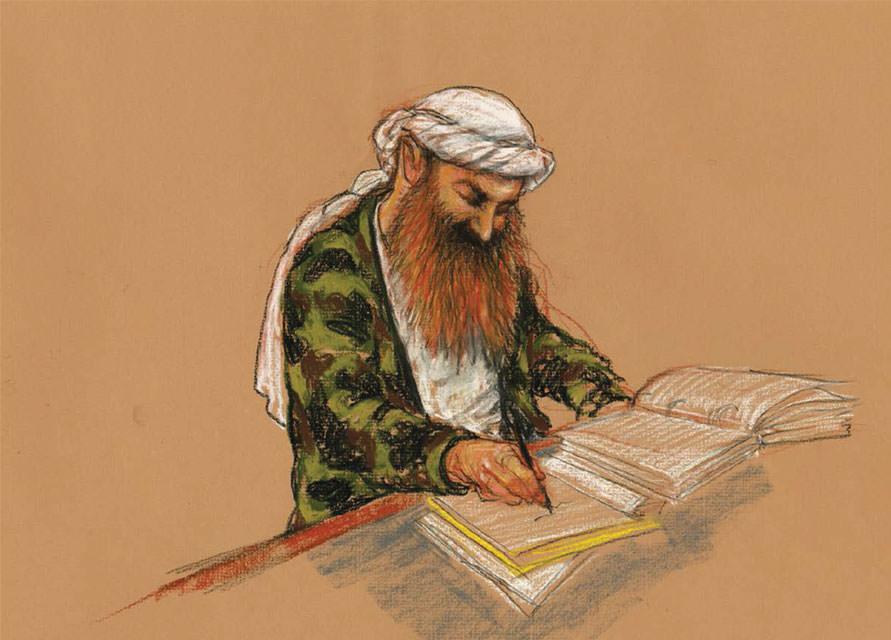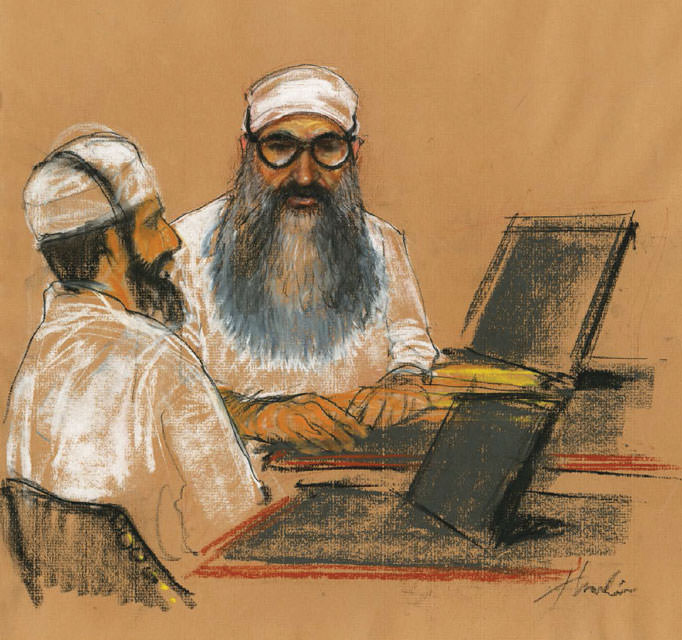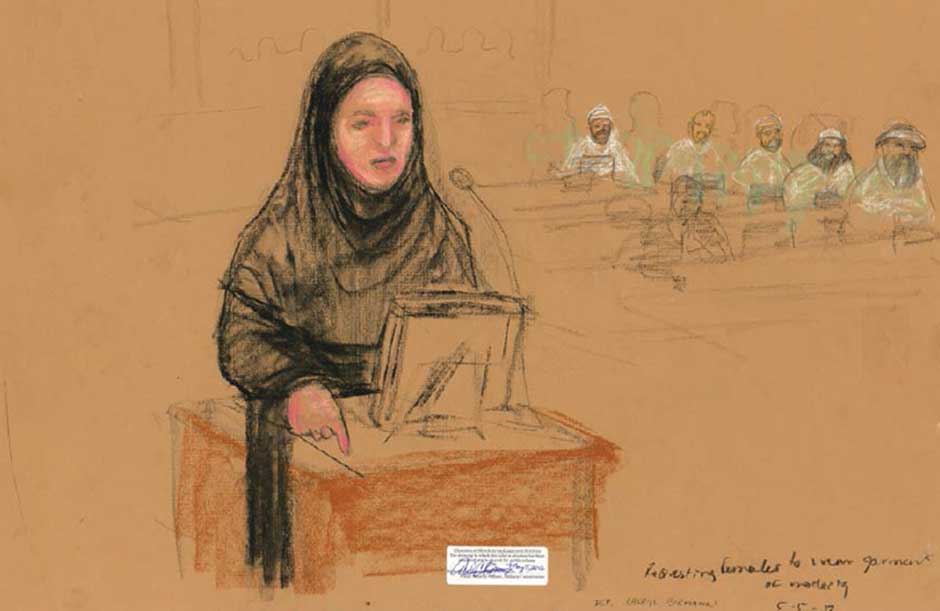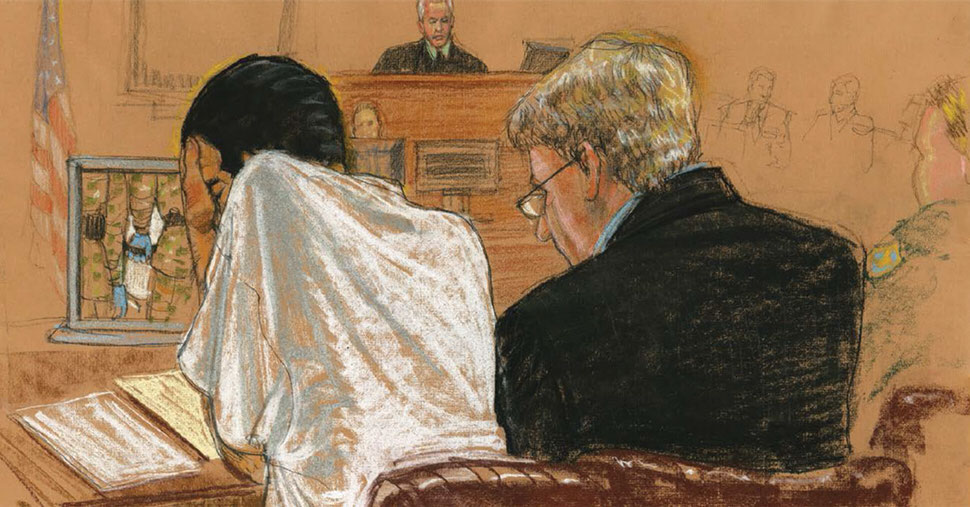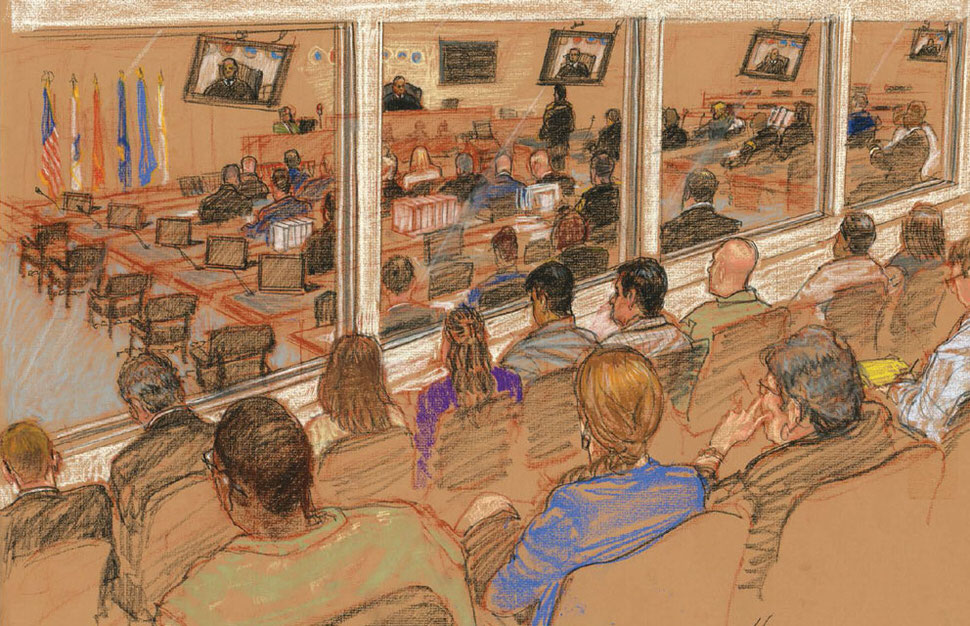Janet Hamlin has worked as a sketch artist at the Guantanamo Bay hearings since 2006, documenting the trials of detainees ranging from Khalid Sheikh Mohammed, the alleged mastermind of the September 11, 2001 attacks, to David Hicks, an Australian and a former cowboy and kangaroo skinner who was sentenced to nine months for training in al-Qaeda camps in Afghanistan. Since cameras and recording equipment are forbidden in the trials, her drawings, a selection of which appears below, form the primary visual record of the events that have taken place there.
Guantanamo tribunals differed from the other court drawings I’ve done. For instance, there were faces I was not allowed to draw, and each drawing could not leave the courtroom until a Pentagon official reviewed it. He would examine the art, occasionally have me erase some of the details, then sign and stamp the art once approved. Then I carried the sketches back, uploaded them to the media pool with descriptions, grabbed lunch, and got back for the afternoon session, going through three levels of security every time we entered or left the court area, always with an escort. Time is precious.
My drawings are a sort of “visual journalism”; I must edit out some things that are superfluous, and focus on the elements that are most important, at times outlining or enlarging things of importance to help tell the story in the best way possible, without skewing or fictionalizing the scene. Rarely do I have an unobstructed view. Usually, there are people between what I’m drawing and me: as well as poles, desks, etc. I work to create a composition that focuses on the scene overall while omitting all the unnecessary or obstructive elements.
Time is of the essence. While I want every drawing to be well composed, sometimes I just don’t have time to finish a scene I had in mind. A new witness is called, or something may happen that demands a new drawing. Often my supplies are stacked on my board, which can cause an empty space. Not knowing how long I have, I get what I can quickly as possible while the subjects are in constant motion. Evidence shown on a screen in court is often not released. So I sketch that too, sometimes in a separate vignette.
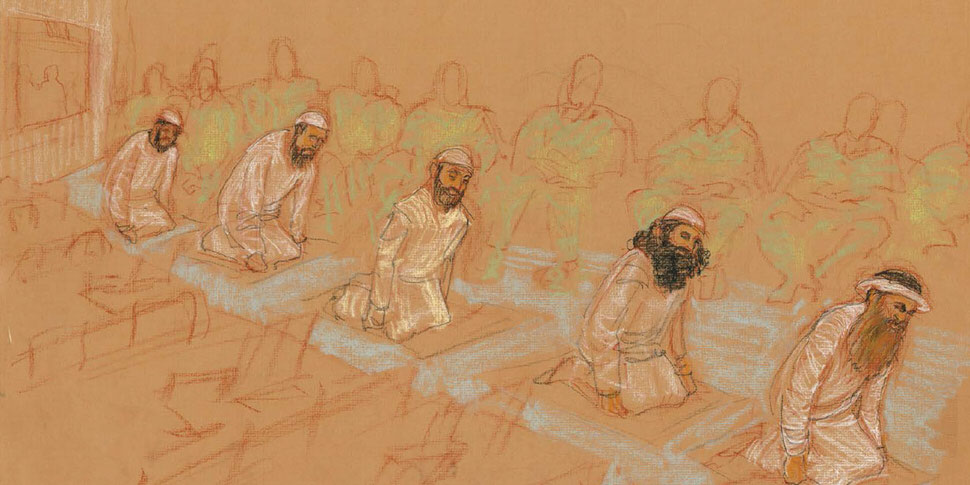
Fantagraphics
The detainees in the 9/11 trial were allowed 45 minute breaks to pray in court during the arraignment. They got up, unfurled their prayer rugs and, with KSM leading, bowed their heads to the floor in traditional prayer, while soldiers stood guard along the walls and others milled around the court, May 5, 2012

Fantagraphics
Khalid Sheikh Mohammed wore a camouflage vest to court. Army Col. James L. Pohl, the judge, is shown in back with a court security officer at his left. Both Pohl and the security officer have buttons to mute, with white noise, testimony they suspect may be classified; the security officer also reviews my sketches before releasing them, October 17, 2012

Fantagraphics
A view of the five accused 9/11 co-conspirators, with a security guard behind the monitor. From left to right, Mustafa Ahmad al-Hawsawi, Ammar al-Baluchi, Ramzi bin al-Shibh, Walid bin Attash, and Khalid Sheikh Mohammed. KSM’s defending attorney, David Nevin, addresses the judge, January 28, 2013
This essay and selection of images are drawn from Sketching Guantanamo: Court Sketches of the Military Tribunals 2006–2013 by Janet Hamlin, published this month by Fantagraphics.


